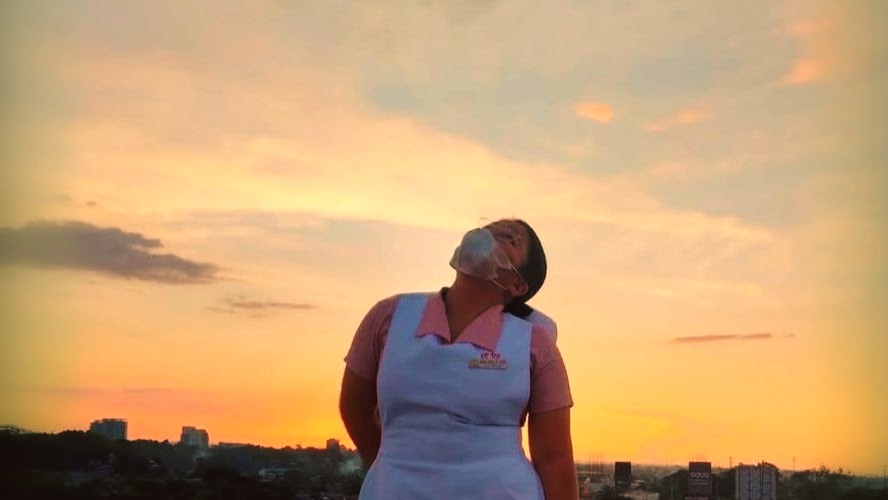Steven Angelo
July 2020
City of San Fernando, La Union
When we go up north, we always aim to be in the City of Pines, Baguio City, to feel its cold weather, to mesmerize the beauty of Cordillera Mountains and to feel the bristles of pine trees. Intimate love for Baguio means in-depth love for Mother Nature, as most citizens of Cordillera know too well.
Part of Cordillera culture is to protect and be with the environment they live. This is evident not only in their woven cloths, paintings, and carvings but also in the teachings of their ancestors.
To be in the Cordillera plateau is to be immersed in the diverse species of pine trees. In an article written by Dr. Michael A. Bengwayan, the Benguet pine tree (Pinus insularis/kesiya) is the most notable pine tree in the Philippines aside from the Merkus pine or Pinus merkusi. The Benguet pine tree is often referred to as Cordillera pine because the tree grows not only in Benguet but also throughout the Cordillera range covering Mountain Province, Ifugao, Kalinga, Nueva Vizcaya, Abra, including Ilocos Norte and Ilocos Sur.
He also added that the natural range of the pines is enormous. The tree favor rugged conditions, from the ecotome of Benguet’s Mount Pulag mossy montane forests, to the dipterocarp skyline of Balbalasang, Kalinga, the waterless and extremely exposed rocky crevices of Sagada Mountain Province, the clayey subsoils of Solsona, Ilocos Norte to the rocky domes high above where there seems to be no soil at all in Mount Santo Tomas in Baguio City.
Pinus kesiya, ever proud and conquering, is a symbol of the Cordillera peoples. Whether blanketed in lush cloaks of vibrant green or stripped naked with only their bare trunks remaining, they reveal their beauty throughout the warmest, wettest or rainiest seasons. Their knowledge of time, history and events is timeless and though science, technology and capitalism seem to have combined to end their reign, they continue to remain.

The pine tree has a lot of benefits. On the surface, what most people see is the economic side of pine trees — lumber for housing, furniture and buildings. Very few are aware of the ecological, social, medical and cultural contributions of pine trees.
As food, pine trees seem unimportant to humans except for birds, insects and a few animals. While some pine tree species have seeds big enough to eat, Pinus kesiya’s seeds are, although edible, too small to really satisfy human hunger. Only the Lebanese pine, Korean and Pinon pine have seeds big enough to be harvested for food.
But the trees are more important for something else. There are four direct and uncontested facts that the pine trees do for the Philippine environment. First, the trees help directly contribute to oxygen supply to the environment for humans to breathe, directly affecting local and regional air quality by altering the urban atmospheric environment.
Humans breathe only oxygen which comprises 21 percent of our atmosphere. But oxygen in many parts of the world is being depleted due to pollution wherein dangerous methane, sulphur and nitrous oxides and CO2 and smog are increasing in the air. Trees supply about 70 percent of our oxygen supply.
Based on the news article published by Philippine Daily Inquirer last July 26, 2019, a proposal to declare Baguio’s pine as a heritage tree is being reviewed to determine how it would impact on development projects in the city.
The proposal was revived by the city council only to be tabled because of questions regarding its scope, how it could be enforced, and whether it would prevent developers from cutting pine trees standing on their projects.
A moratorium on tree cutting is one of the features of a proposed executive order, which Mayor Benjamin Magalong had requested from Malacañang to allow time to rebuild the city’s forests while the government undertakes a rehabilitation of its public service facilities such as sewage. A third of Baguio has tree cover, but only 500,000 of 2.5 million trees are pine species, according to the Department of Environment and Natural Resources.
The pine trees of Baguio gives life to not only tourism but also tree conservation and protection. Cordillerans’ goal of be with the nature should radiate in every Filipino citizen so that people have more green thumbs up in their blogs and social media platforms. We should not only conserve and protect but also emulate green citizenship in every citizens of the world like the Cordillerans do.









